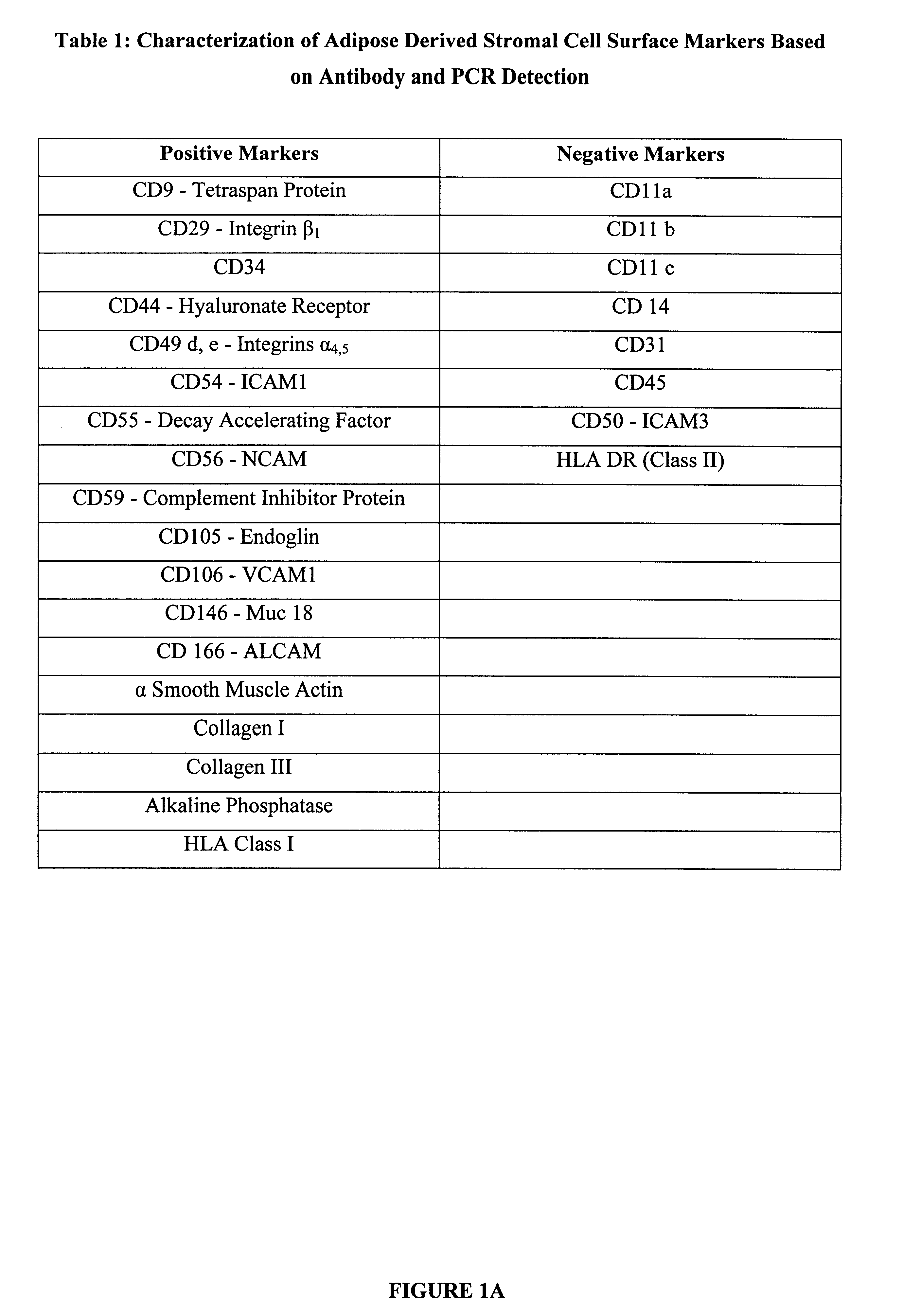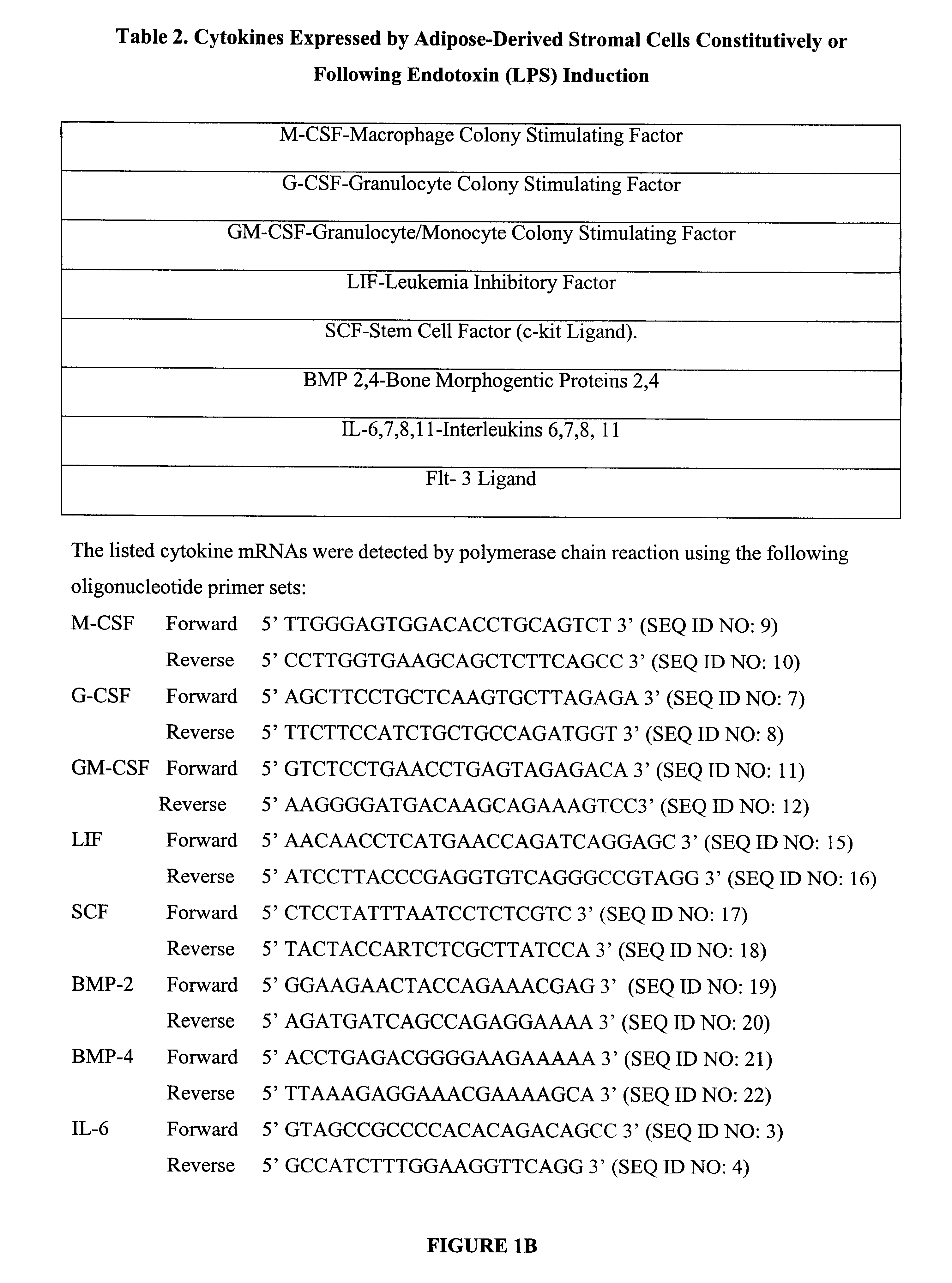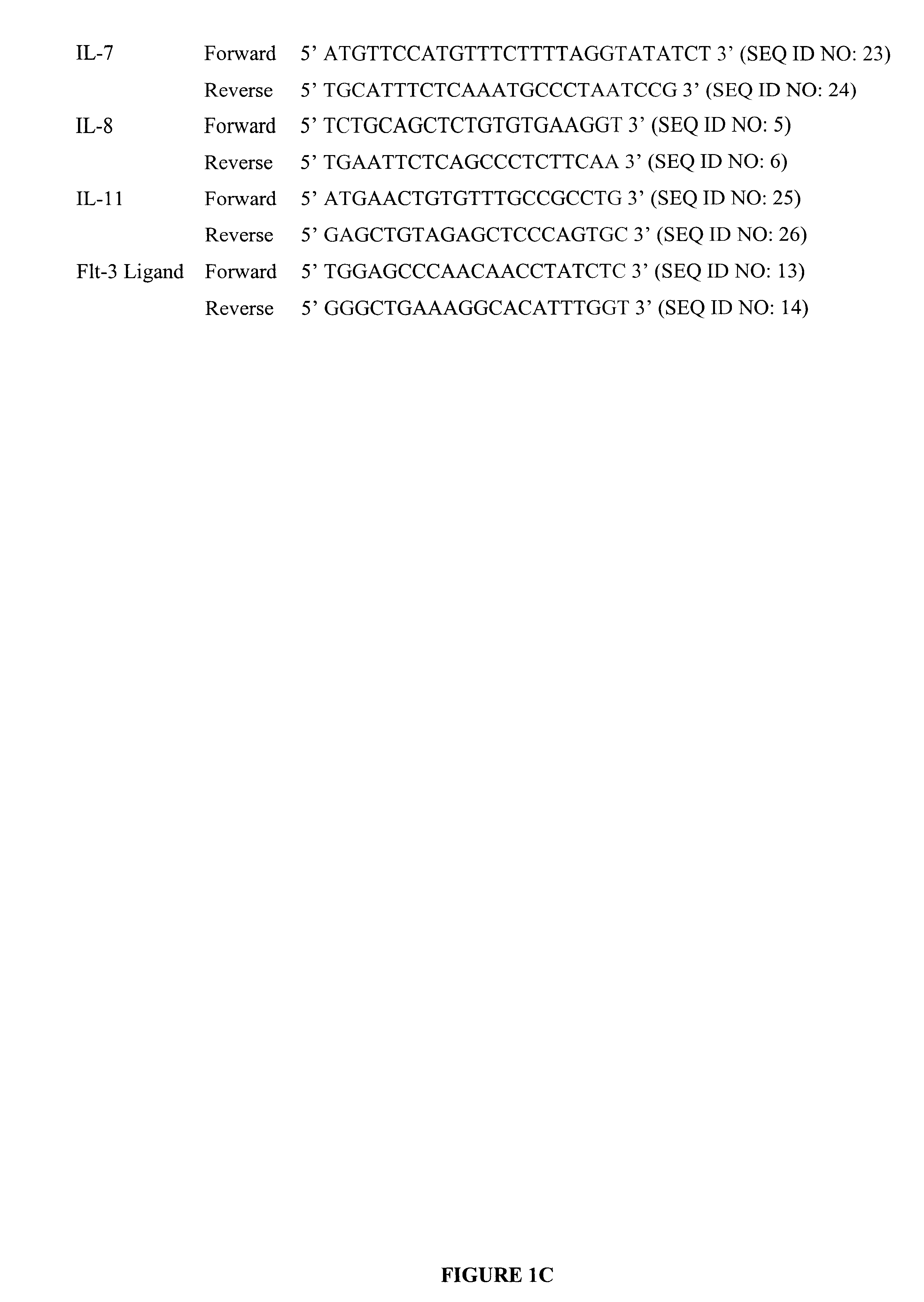Multiple mesodermal lineage differentiation potentials for adipose tissue-derived stromal cells and uses thereof
a technology of adipose tissue and differentiation potential, which is applied in the field of multiple mesodermal lineage differentiation potentials for adipose tissue-derived stromal cells, can solve the problems of bone marrow biopsy procedures, difficulty and risk, and the accompanying loss of memory b cells, so as to enhance or inhibit the differentiation of adipose tissue derived, enhance differentiation, and reduce the production of circulating blood cells
- Summary
- Abstract
- Description
- Claims
- Application Information
AI Technical Summary
Benefits of technology
Problems solved by technology
Method used
Image
Examples
example 1
Expression of Cell Surface Adhesion Molecules and Hematopoietic Cytokines by Adipose Tissue-Derived Stromal Cells in vitro
Stromal cells are isolated from human subcutaneous adipose tissue according to methods described in "Methods and Compositions for the Differentiation of Human Preadipocytes into Adipocytes" Ser. No. 09 / 240,029, filed Jan. 29, 1999. These cells are plated at a density of 30,000 cells per cm.sup.2 in chamber slides, in 6 well tissue culture plates, or in T25 cm.sup.2 flasks. Cells are maintained in culture for 8 days in DMEM / Ham's F-10 supplemented with 10% fetal bovine serum, penicillin 100 units / ml, streptomycin 100 .mu.g / ml, and 7.5 mM HEPES pH 7.2. The surface proteins expressed by the stromal cells are determined by immunologic techniques based on immunohistochemistry and / or flow cytometry. For immunohistochemical analysis, chamber slides are fixed using 95% ethanol / 5% glacial acetic acid and incubated with murine monoclonal antibodies detecting human cell sur...
example 2
Establishment of Myelopoietic Co-Cultures with an Adipose Tissue-Derived Stromal Cells Layer in vitro
Stromal cells are isolated from human subcutaneous adipose tissue according to methods described in "Methods and Compositions for the Differentiation of Human Preadipocytes into Adipocytes" Ser. No. 09 / 240,029, filed Jan. 29, 1999. These cells are plated at a density of 500 to 20,000 cells per cm.sup.2. Stromal cells are established in the cultures for 1 to 3 days prior to the introduction of hematopoietic progenitor cells into the co-culture system. Hematopoietic progenitor cells are isolated from one of the following human tissues: bone marrow, umbilical vein / placental blood, peripheral blood, spleen. Alternatively, murine tissues are used. Murine bone marrow cells are harvested by flushing the marrow cavity of 6 to 10 week old mice with DMEM / 10% FCS under sterile conditions. Murine spleen cells are harvested by physical passage through a fine metal screen under sterile conditions....
example 3
Ability of Adipose Tissue Derived Stromal Cell / Hematopoietic Progenitor Cell Co-Cultures to Maintain Proliferation of Hematopoietic Progenitors In vitro
Adipose tissue derived stromal cell / hematopoietic progenitor co-cultures established under liquid culture conditions described in Example 1 are used to assess the ability of this system to maintain the proliferation of the hematopoietic progenitor cells in vitro. Co-cultures are established using human adipose tissue derived stromal cells and murine hematopoietic progenitors. Cultured cells are transduced with a viral vector expressing a traceable protein marker such as green fluorescent protein or beta-galactosidase. Alternatively, co-culture cells are identified by expression of a unique antigen or genetic marker due to their origin; e.g., the expression of human proteins for the stromal cells, and the expression of a transgenic or male gender specific marker for the murine hematopoietic cells. Established co-cultures are harveste...
PUM
| Property | Measurement | Unit |
|---|---|---|
| time | aaaaa | aaaaa |
| time | aaaaa | aaaaa |
| time | aaaaa | aaaaa |
Abstract
Description
Claims
Application Information
 Login to View More
Login to View More - R&D
- Intellectual Property
- Life Sciences
- Materials
- Tech Scout
- Unparalleled Data Quality
- Higher Quality Content
- 60% Fewer Hallucinations
Browse by: Latest US Patents, China's latest patents, Technical Efficacy Thesaurus, Application Domain, Technology Topic, Popular Technical Reports.
© 2025 PatSnap. All rights reserved.Legal|Privacy policy|Modern Slavery Act Transparency Statement|Sitemap|About US| Contact US: help@patsnap.com



